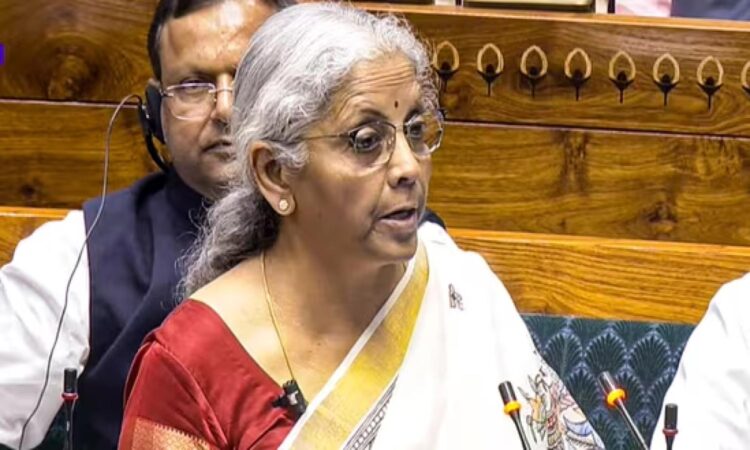Delhi, February 1: Finance Minister Nirmala Sitharaman presented the Union Budget 2025, announcing significant relief for income tax payers.
Individuals earning up to Rs 12 lakh annually will now be exempt from paying income tax. Additionally, taxpayers will be able to file Income Tax Returns (ITR) for the past four years simultaneously. For senior citizens, the TDS exemption limit has been raised from Rs 50,000 to Rs 1 lakh.
The budget also introduced major healthcare measures. The government announced price reductions on cancer medicines and the establishment of cancer daycare centres in every district over the next three years. In the upcoming financial year, 200 such centres will be set up.
With Bihar set to hold assembly elections later this year, the budget outlined several initiatives for the state. A National Institute of Food Technology will be established, IIT Patna will be expanded, and a new Makhana Board will be set up. Additionally, three new airports will be developed in Bihar.
Other major announcements included:
– A new Income Tax Bill will be introduced next week.
– Over the next six years, efforts will be made to boost the production of lentils like masoor and toor.
– A five-year mission to increase cotton production and strengthen the textile industry.
– The Kisan Credit Card loan limit will be increased from Rs 3 lakh to Rs 5 lakh.
– MSME loan guarantee cover raised from Rs 5 crore to Rs 10 crore, with a total credit provision of Rs 1.5 lakh crore.
– Startups will receive loans of up to Rs 20 crore, double the previous Rs 10 crore limit.
– A special initiative for the toy industry under ‘Make in India.’
The government has decided to streamline tariff rates, reducing them from seven to eight categories. Additionally, social welfare surcharge will be removed.
In healthcare, 36 essential medicines will now be duty-free, including life-saving drugs. The custom duty on six specific medicines will be reduced to 5%.
To improve digital education and healthcare access, all government schools and primary health centres will be equipped with broadband connectivity.
In a major financial sector reform, FDI in insurance will be increased from 74% to 100%, but only for companies that reinvest their full premium earnings within India.
The budget has allocated funds for developing 50 tourism sites in collaboration with state governments. Measures include:
– Skill development programmes for hospitality management.
– Mudra loans for homestay businesses.
– Expansion of e-visa services and reductions in visa fees.
Under the Udaan regional connectivity scheme, 88 new airports have been added, with plans to expand to 120 more destinations. Bihar will receive three greenfield airports, and upgrades are planned for Patna and Behata airports.
The budget also allocates Rs 1 lakh crore for urban governance, covering municipal reforms and land development initiatives.
The budget includes plans to add 75,000 new medical seats over the next five years, with 10,000 seats to be introduced next year alone.
For artificial intelligence (AI) research, the government will invest Rs 500 crore to establish a Centre of Excellence in AI. IIT Patna will receive additional funding for infrastructure expansion.
The government plans to launch a National High-Yield Seed Mission, providing over 100 improved seed varieties for farmers. Efforts will focus on pulses like toor, urad, and masoor, ensuring bulk purchases from farmers over the next four years.
To boost fisheries, deep-sea fishing in Andaman & Nicobar will be promoted, targeting India’s Rs 60,000 crore seafood market.
A cotton productivity mission will be launched to enhance cotton yields and encourage the cultivation of long-fibre varieties.
Presenting the budget, Sitharaman emphasised five key priorities:
1. Accelerating economic growth.
2. Ensuring inclusive and sustainable development.
3. Encouraging private sector investments.
4. Boosting domestic consumption.
5. Strengthening India’s emerging middle class.
The budget introduces wide-ranging reforms across taxation, healthcare, education, MSME support, tourism, and agriculture. With a focus on infrastructure and industrial expansion, the government aims to drive long-term economic growth while providing immediate tax relief and social benefits.











